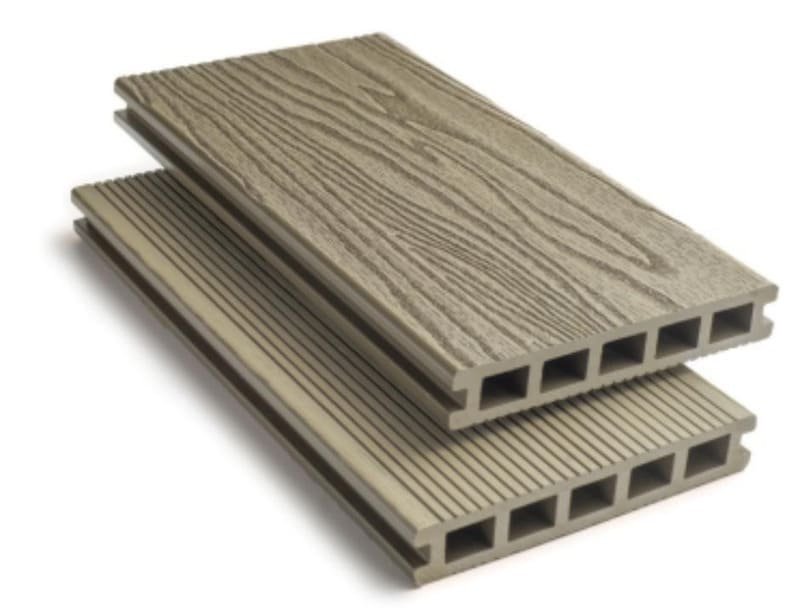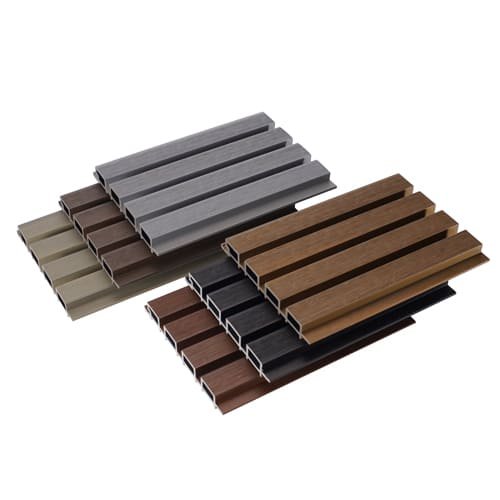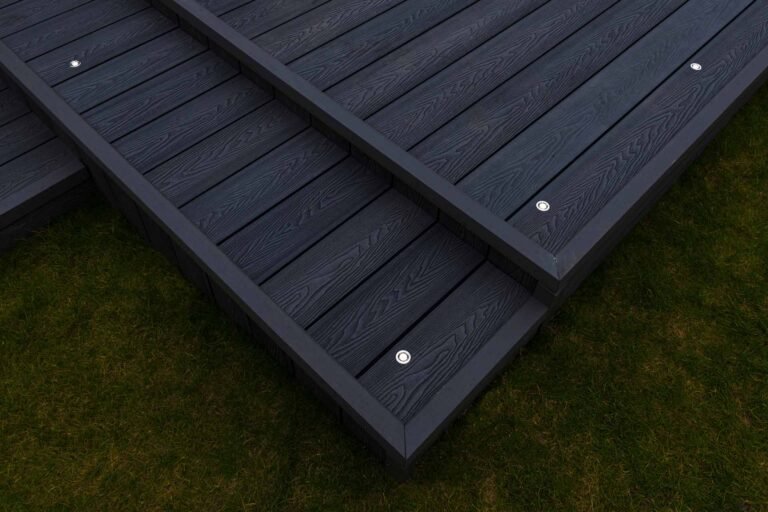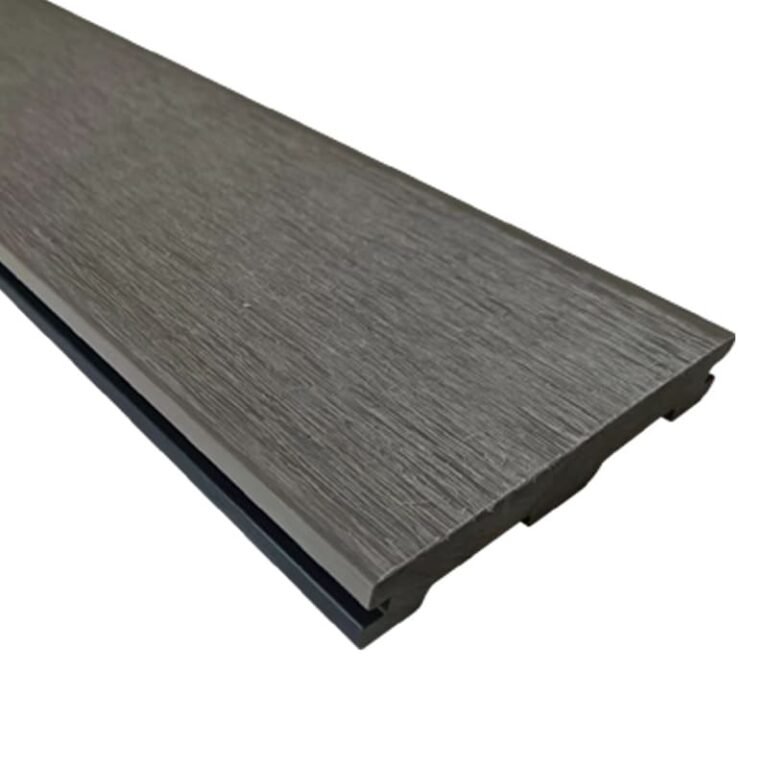Are your customers asking tough questions about sustainability? A vague answer about recycling can hurt your credibility. Here is the straightforward information you need to build trust with your clients.
Yes, composite decking is technically recyclable, but the process is complex and not widely available yet. Because the wood fibers and plastic are fused, separating them is difficult. More commonly, used boards are ground down and "downcycled" into new, non-structural products like parking blocks or landscape edging.
Understanding the end-of-life for composite decking is important. But this is just one piece of a much larger sustainability puzzle that your customers are interested in. To give them the full picture, we need to look at the entire lifecycle of the product. This deeper knowledge will help you build trust and position yourself as an expert. Let's break down what truly makes this material a smart choice for the environment.
Is composite decking environmentally friendly?
Trying to market decking as "green"? It can be confusing when you hear claims from all sides. Without a clear message, you might miss sales from environmentally focused customers.
Composite decking is an environmentally friendly choice, especially compared to traditional wood. It uses recycled plastic and waste wood, preventing them from entering landfills. Its long lifespan also means fewer resources are used for replacements over decades, making it a sustainable long-term investment.
The term "eco-friendly" gets used a lot, so let's look at the facts. In my 12 years in the WPC industry, I've seen the focus shift from just low maintenance to genuine sustainability. It's about more than just the final product; it's about the entire process from start to finish.
The Materials We Use
The core of WPC’s green credentials comes from its composition. We take materials that would otherwise be waste and give them a new, long-lasting purpose. This includes reclaimed wood fibers, like sawdust from furniture factories, and recycled plastics, such as milk jugs and shopping bags. By using these inputs, we directly reduce the amount of waste going into landfills and lower the demand for virgin timber, which helps protect our forests.
A Longer Life Means Less Waste
Think about the total environmental impact over 30 years. A traditional wood deck might be replaced two or three times in that period. Each replacement means more trees cut down, more manufacturing, and more old material to dispose of. A composite deck, however, is built to last for decades. This durability is a key environmental benefit because it drastically reduces the cycle of replacement and waste.
Certifications Matter
For any importer, certifications are proof of a manufacturer's claims. When you see certifications like FSC, CE, and ISO, you know the company adheres to strict international standards for responsible sourcing and quality manufacturing.
| Certification | What It Means for You and Your Customers |
|---|---|
| FSC | Guarantees that the wood fibers come from responsibly managed forests. |
| CE/Intertek | Shows the product meets EU safety, health, and environmental protection requirements. |
| ISO | Confirms the manufacturer has a consistent quality management system in place. |
These are not just logos on a box. They are your assurance that you are sourcing a genuinely sustainable product.
Can composite deck boards be reused?
Your customers have finished a project and have leftover boards. They don't want to throw them away. Not knowing how to advise them can make you seem unhelpful.
Absolutely. While full-scale recycling is still developing, reusing composite deck boards is a simple and practical way to reduce waste. Their durability and resistance to rot make them perfect for many outdoor projects where they won't bear structural loads.
I always encourage my partners to think beyond the deck. Reusability is a great selling point that adds real value for the end user. It shows that the product's life doesn't have to end just because the main project is done. It positions the material as a long-term resource, not a disposable good.
Creative Ideas for Leftover Boards
Suggesting practical uses for off-cuts and old boards can be a great service to your clients. It helps them minimize waste and get more value from their purchase. Here are a few simple ideas I've shared with partners over the years.
1. Garden Projects
WPC is perfect for garden use because it won't rot or leach chemicals into the soil like pressure-treated wood can.
- Raised Garden Beds: The boards are strong enough to hold soil and will last for years without maintenance.
- Planter Boxes: Cut pieces can be assembled into stylish and durable custom planters.
- Landscape Edging: A simple and effective way to create clean lines between lawn and garden beds.
2. Outdoor Furniture and Accents
For a handy DIYer, leftover boards can become beautiful outdoor accessories.
- Small Benches: Ideal for placing in a garden or by a back door.
- Outdoor Storage Crates: Perfect for storing garden tools or kids' toys.
- Firewood Racks: A durable base to keep firewood off the damp ground.
I remember one distributor in Australia who started a local campaign with landscapers, showing them how to build these items. It became a fantastic marketing tool that highlighted the product's versatility and eco-friendly nature.
What is the lifespan of a composite deck?
Your customers are making a big investment. They want to know "how long will it last?" If you can't give a confident answer, they may choose another material or supplier.
A quality composite deck has a lifespan of 25 to 30 years or more. Many manufacturers, including Veejoy, back this up with 25-year warranties. Unlike wood, it resists rot, insects, and splintering, ensuring a long and useful life with very minimal maintenance.
A long lifespan is one of the most compelling reasons to choose composite decking. I've often said to my partners that we aren't just selling decking; we are selling decades of worry-free outdoor living. This durability is not an accident. It comes from advanced manufacturing technology and a commitment to using high-quality materials.
Factors That Ensure a Long Life
The true lifespan of a deck depends on the quality of the product and the installation. Here's what makes a difference.
1. Capped vs. Uncapped Composite
- Uncapped (First Generation): These early versions were a mix of wood and plastic but were more porous, making them susceptible to staining and mildew.
- Capped (Modern): Today’s best products are "capped" with a protective polymer shell. This outer layer provides superior resistance to fading, scratching, and moisture. Capped composite is the industry standard for durability, and it's what your customers should expect. I personally saw the industry transform when this technology became common. It solved nearly all the early performance issues.
2. The Importance of Proper Installation
A great product can still fail if it's installed incorrectly. The two most critical factors are:
- Ventilation: There must be adequate airflow under the deck to prevent moisture buildup.
- Joist Spacing: Following the manufacturer's guidelines for the distance between support joists is essential to prevent sagging over time.
Providing clear installation guides to your customers is crucial. It protects their investment and ensures they get the full lifespan from the product.
The Warranty: Your Proof of Quality
A manufacturer's warranty is a direct reflection of their confidence in the product. A 25-year warranty for residential use[^1] and a 10- or 15-year warranty for commercial use are strong indicators of a high-quality, long-lasting board.
Conclusion
Composite decking is a durable, long-lasting, and environmentally friendly material made from recycled content. Its reusability and long lifespan make it a truly sustainable choice for any building materials distributor.
[^1]: Find out what warranties offer and how they protect customers, reinforcing confidence in your product's quality.








